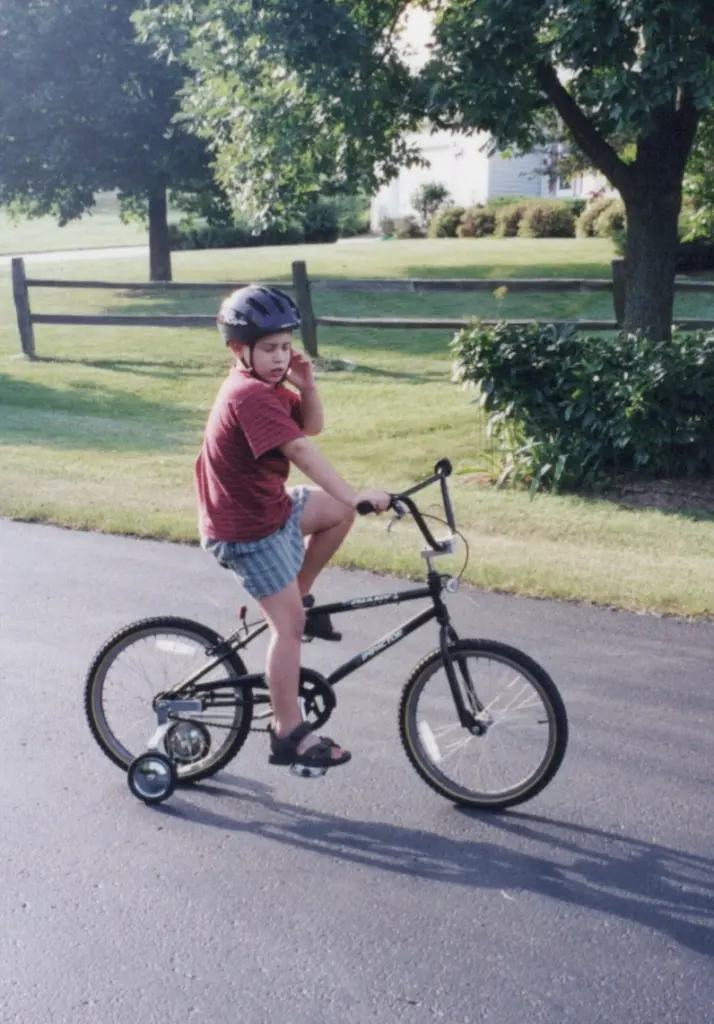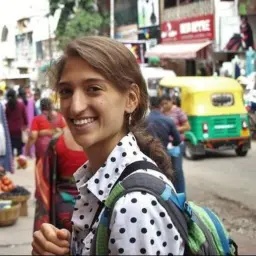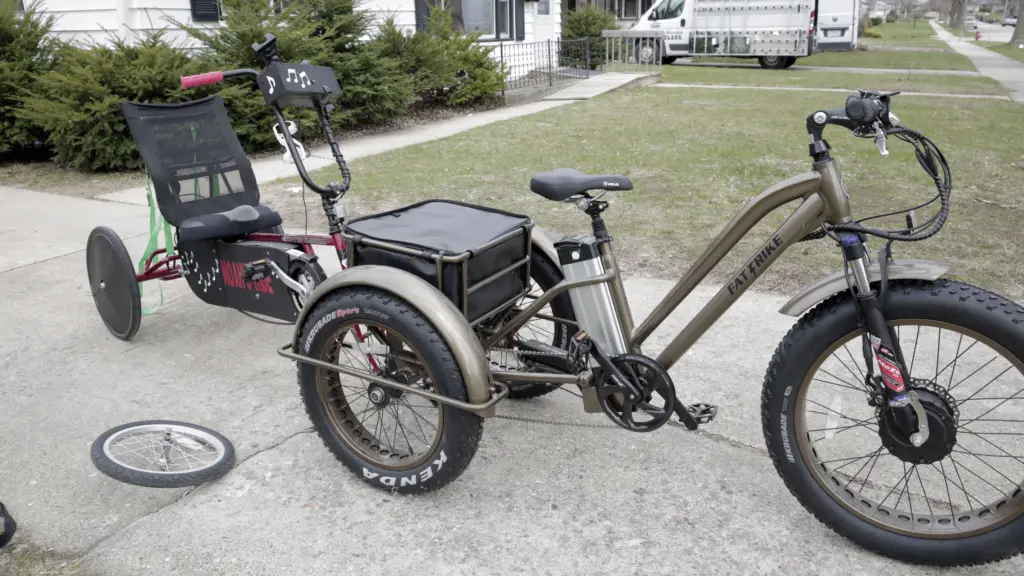As an 8-year-old, Noah would pedal around the cul-de-sac in his Madison, Wisconsin, neighborhood, showing off hard-won biking skills his mom had patiently taught him over the course of multiple years.
“He loved it,” says Noah’s mom, Lucille Marchand. “And then one day, he said he was done.”
 Noah on his bike as a child. Photo courtesy of Lucille Marchand.
Noah on his bike as a child. Photo courtesy of Lucille Marchand.
But Noah’s sudden change of heart went beyond what might seem like the typical fickle nature of childhood interests. Noah, now 28, is autistic, with limited verbal expression, leaving his mother to speculate about his reasons. An avid biker, she was devastated to lose both a connection point with her son and a way for him to explore his surrounding community.
Two decades later, a team of recent biomedical engineering graduates from the University of Wisconsin-Madison is helping Marchand offer Noah a new way to bike. As part of the Department of Biomedical Engineering’s hands-on design curriculum, the group built half of a tandem bike—fully customized for Noah—that attaches to the back of an electric bike and offers him the experience of biking while ensuring his safety and security.
“Noah’s Ride,” the moniker written in white letters on the plastic that covers the bike’s chain, features a resistance mechanism, repurposed from an exercise bike, to simulate the physical work of biking and a Bluetooth speaker that connects to Noah’s iPod and only plays when he pedals. Noah has a deep and eclectic love of music and is especially fond of Adele, Bob Marley, Bob Dylan and, above all else, The Beatles, says Michael Yuen-Hurwitz, his former case manager with Options in Community Living, a Madison nonprofit that provides support services for people with disabilities.
 Callie Mataczynski
Callie Mataczynski
The students—team leader Callie Mataczynski (BSBME ’20), Eric Arndt (BSBME ’20), Mengizem Tizale (BSBME ’21) and Aaron Wagner (BSBME ’20)—worked with Yuen-Hurwitz and Marchand to incorporate a number of features tailored to Noah’s needs into their design.
The straps on Noah’s seat match the ones from his van, keeping him secure. Plastic coverings on the wheels and chain safeguard his hands. And while his handlebars can turn slightly and his pedals spin, the electric bike, ridden by a caregiver, has full control of steering and speed.
“It’s a really, really great design. They designed a lot of features specifically around Noah, to keep him safe, to keep the staff safe, and to keep the experience as enjoyable as possible for him,” says Yuen-Hurwitz. “Little modifications, but they total up to a bike that’s perfectly made for Noah.”
But to deliver what Marchand calls a “perfect” design, the biomedical engineering students had to navigate a string of logistical challenges during and after the project’s allotted two semesters.
First, a water main break flooded the Technical Education and Manufacturing Lab in the basement of the Engineering Centers Building in February 2020. A month later, the UW-Madison campus closed at the outset of the COVID-19 pandemic, scattering the students to their hometowns.
Wagner, who was handling the electrical work for the speaker system, ordered components online and used a leftover microcontroller from another class to assemble it in Appleton, Wisconsin. Mataczynski, who was dealing with a debilitating illness later diagnosed as Lyme disease, used her dad’s welding equipment in Wausau, Wisconsin, and grabbed spare parts from Rib Mountain Cycles, where she worked as a bike mechanic (Madison’s Revolution Cycles, where Mataczynski also worked, contributed equipment as well). Wagner and Mataczynski met several times to hand off parts.
 The team of UW-Madison biomedical engineering students designed and fabricated a custom mounting mechanism for attaching Noah’s bike to the back of an electric bike. Photo by Tom Ziemer.
The team of UW-Madison biomedical engineering students designed and fabricated a custom mounting mechanism for attaching Noah’s bike to the back of an electric bike. Photo by Tom Ziemer.
COVID-enforced manufacturing delays meant the electric bike didn’t arrive for another a year, in the summer of 2021. Mataczynski finished up the custom mounting mechanism for attaching Noah’s half that fall, borrowed a neighbor’s pickup truck and trailer and delivered it all to Noah’s house on the east side of Madison.
“I worked on projects for the BME department every single year that I was in college, and never did I have to deal with this many roadblocks. And never have I actually had a product that turned out so well,” says Wagner, who’s now a product development engineer at Kimberly-Clark.
In late April 2022—nearly two years after the students fulfilled their academic commitment to the project—Mataczynski once again made the 2-hour drive from Wausau to Noah’s house for some fine-tuning. Because Noah is extremely sensitive to temperatures and the importance of establishing a positive first impression, his care team postponed his first ride until spring 2022. A rainy April means he’s still waiting to take his inaugural spin.
Marchand hopes the bike will do more than just give her son a way to get exercise; she’d love for him to interact with his community in a new way and maybe even spark conversations about disabilities.
“I think there are a lot of other people that could benefit, who can’t ride a bike, who can’t be on a tandem, who are really in need of something like this,” says Marchand, a doctor and professor emerita with the UW-Madison School of Medicine and Public Health. “I hope it can be a prototype for other bikes. I hope it doesn’t end with Noah.”
Out of respect for Noah’s privacy, we’re only using his first name.